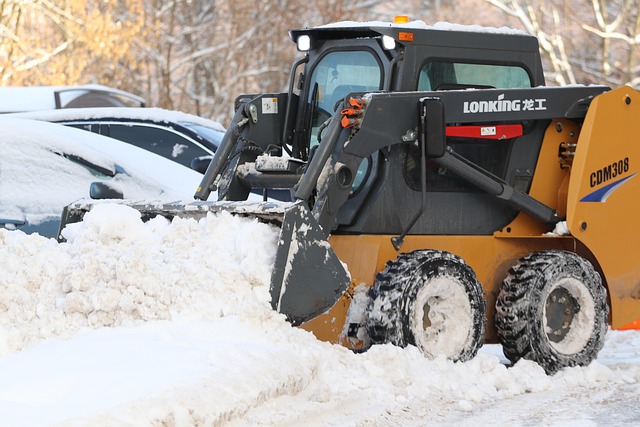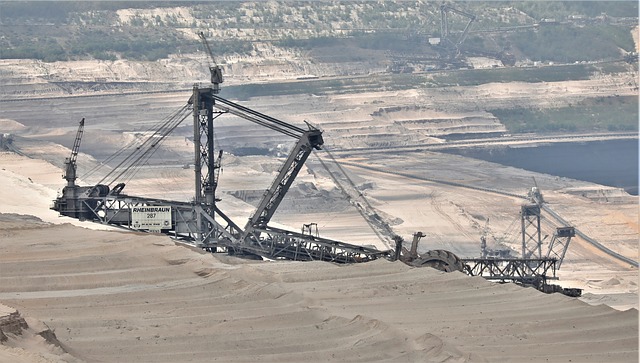Commercial snow plowing in urban areas requires strategic planning and specialized equipment to manage high-traffic pedestrian flows, varied terrain, and diverse property types. Safety is paramount, with rigorous training, appropriate gear, regular safety meetings, and strict equipment maintenance protocols. Effective operations involve using proper machinery like snowplows and salt spreaders, regular vehicle maintenance, and best practices for navigation in varying weather conditions. Clear communication and adaptability to changing weather patterns are crucial for fostering a safe work environment.
In regions with harsh winters, efficient and safe commercial snow plowing operations are vital for maintaining accessibility and business continuity. This article delves into the critical aspects of ensuring worker and public safety during sidewalk snow removal. From understanding complex operations to implementing essential measures, maintaining equipment, and navigating weather challenges, each step plays a crucial role in preventing accidents and injuries. Discover expert tips for optimized and secure commercial snow plowing practices.
- Understanding Commercial Snow Plowing Operations
- Essential Safety Measures for Snow Removal Teams
- Equipment and Vehicle Maintenance for Safe Operations
- Navigating Weather Conditions: Ensuring Safe Practices
Understanding Commercial Snow Plowing Operations

Commercial snow plowing operations require a deep understanding of the unique challenges and considerations that come with clearing sidewalks in urban areas. Unlike residential neighborhoods, commercial districts often feature high-traffic pedestrian flows, varied terrain, and diverse property types. Each intersection, parking lot, and entrance needs tailored attention to ensure safe access for customers, employees, and the public.
Effective commercial snow plowing involves strategic planning, specialized equipment, and trained personnel. Snow removal teams must navigate tight spaces, manage snow accumulation quickly to prevent disruptions, and comply with local regulations regarding snow disposal. A thorough grasp of these operations is crucial for maintaining safety, minimizing business interruptions, and fostering positive relations between businesses and their surrounding communities.
Essential Safety Measures for Snow Removal Teams

When it comes to commercial snow plowing, safety should never be an afterthought. It’s paramount that all team members are well-trained and equipped with the right gear, including reflective clothing, sturdy boots, and communication devices. Regular safety meetings and comprehensive training sessions on operating heavy machinery, navigating icy conditions, and recognizing potential hazards are non-negotiable.
Additionally, teams must adhere to strict protocols for equipment maintenance and inspection. Snow removal vehicles should be fitted with anti-slip tires, functional brakes, and well-maintained blades to ensure efficient clearing without causing damage or injury. Regular checks for loose parts, proper lubrication, and clean exhaust systems are essential measures to prevent accidents during operation.
Equipment and Vehicle Maintenance for Safe Operations

Maintaining safe operations in commercial snow removal requires proper equipment and regular vehicle maintenance. Snowplows, salt spreaders, and other specialized vehicles are essential tools for clearing sidewalks and keeping public spaces accessible during winter storms. However, these machines demand meticulous care to ensure their optimal performance and operator safety. Regular checks of brakes, tires, lights, and hydraulic systems are non-negotiable, as defects can lead to hazardous situations on icy surfaces.
Proper lubrication, replacement of worn parts, and cleaning of snow removal equipment prevent mechanical failures that could cause accidents. Additionally, ensuring all operators are trained in using the equipment safely and following best practices for commercial snow plowing is crucial. This includes understanding weight distribution, learning how to navigate tight spaces, and knowing when to use de-icing salt effectively to melt snow without causing damage.
Navigating Weather Conditions: Ensuring Safe Practices

Navigating challenging weather conditions is a critical aspect of safe commercial snow removal practices. Snowfall patterns can vary widely, from light dustings to heavy blizzards, each presenting unique safety considerations for plowing teams. Professional operators must stay informed about local forecasts and be prepared for sudden changes in weather conditions. During intense storms, it’s essential to employ specialized equipment designed for efficient clearing while prioritizing operator safety.
Safe practices include adjusting plowing techniques based on ice accumulation, which can significantly impact vehicle traction. In extreme conditions, using salt or other de-icing agents before and after plowing can aid in melting snow and ice, making sidewalks safer for pedestrians. Maintaining clear communication among team members is vital to ensure everyone is aware of changing weather patterns and can adapt their methods accordingly, fostering a safe work environment during commercial snow plowing operations.




